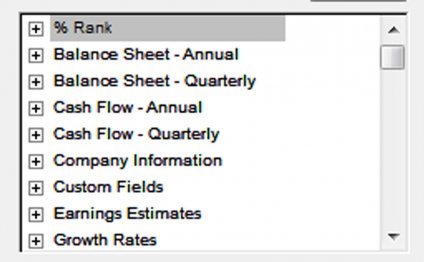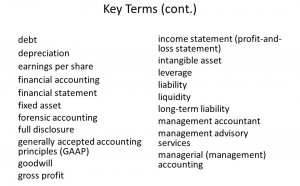
Accounting ratios for Financial Statement Analysis
Financial statement analysis involves the identification of the following items for a company's financial statements over a series of reporting periods:
- Trends. Create trend lines for key items in the financial statements over multiple time periods, to see how the company is performing. Typical trend lines are for revenues, the gross margin, net profits, cash, accounts receivable, and debt.
- Proportion analysis. An array of ratios are available for discerning the relationship between the size of various accounts in the financial statements. For example, you can calculate a company's quick ratio to estimate its ability to pay its immediate liabilities, or its debt to equity ratio to see if it has taken on too much debt. These analyses are frequently between the revenues and expenses listed on the income statement and the assets, liabilities, and equity accounts listed on the balance sheet.
Financial statement analysis is an exceptionally powerful tool for a variety of users of financial statements, each having different objectives in learning about the financial circumstances of the entity.
There are a number of users of financial statement analysis. They are:
- Creditors. Anyone who has lent funds to a company is interested in its ability to pay back the debt, and so will focus on various cash flow measures.
- Investors. Both current and prospective investors examine financial statements to learn about a company's ability to continue issuing dividends, or to generate cash flow, or to continue growing at its historical rate (depending upon their investment philisophies).
- Management. The company controller prepares an ongoing analysis of the company's financial results, particularly in relation to a number of operational metrics that are not seen by outside entities (such as the cost per delivery, cost per distribution channel, profit by product, and so forth).
- Regulatory authorities. If a company is publicly held, its financial statements are examined by the Securities and Exchange Commission (if the company files in the United States) to see if its statements conform to the various accounting standards and the rules of the SEC.
Methods of Financial Statement Analysis
There are two key methods for analyzing financial statements. The first method is the use of horizontal and vertical analysis. Horizontal analysis is the comparison of financial information over a series of reporting periods, while vertical analysis is the proportional analysis of a financial statement, where each line item on a financial statement is listed as a percentage of another item. Typically, this means that every line item on an income statement is stated as a percentage of gross sales, while every line item on a balance sheet is stated as a percentage of total assets. Thus, horizontal analysis is the review of the results of multiple time periods, whiile vertical analysis is the review of the proportion of accounts to each other within a single period. The following links will direct you to more information about horizontal and vertical analyis:
The second method for analyzing financial statements is the use of many kinds of ratios. You use ratios to calculate the relative size of one number in relation to another. After you calculate a ratio, you can then compare it to the same ratio calculated for a prior period, or that is based on an industry average, to see if the company is performing in accordance with expectations. In a typical financial statement analysis, most ratios will be within expectations, while a small number will flag potential problems that will attract the attention of the reviewer.
There are several general categories of ratios, each designed to examine a different aspect of a company's performance. The general groups of ratios are:
- Liquidity ratios. This is the most fundamentally important set of ratios, because they measure the ability of a company to remain in business. Click the following links for a thorough review of each ratio.
- Activity ratios. These ratios are a strong indicator of the quality of management, since they reveal how well management is utilizing company resources. Click the following links for a thorough review of each ratio.
- Leverage ratios. These ratios reveal the extent to which a company is relying upon debt to fund its operations, and its ability to pay back the debt. Click the following links for a thorough review of each ratio.
- Profitability ratios. These ratios measure how well a company performs in generating a profit. Click the following links for a thorough review of each ratio.
Problems with Financial Statement Analysis
While financial statement analysis is an excellent tool, there are several issues to be aware of that can interfere with your interpretation of the analysis results. These issues are:
- Comparability between periods. The company preparing the financial statements may have changed the accounts in which it stores financial information, so that results may differ from period to period. For example, an expense may appear in the cost of goods sold in one period, and in administrative expenses in another period.
- Comparability between companies. An analyst frequently compares the financial ratios of different companies in order to see how they match up against each other. However, each company may aggregate financial information differently, so that the results of their ratios are not really comparable. This can lead an analyst to draw incorrect conclusions about the results of a company in comparison to its competitors.
- Operational information. Financial analysis only reviews a company's financial information, not its operational information, so you cannot see a variety of key indicators of future performance, such as the size of the order backlog, or changes in warranty claims. Thus, financial analysis only presents part of the total picture.
YOU MIGHT ALSO LIKE



Share this Post
Related posts
Accounting Financial Statement
The income statement is a key financial statement which reports on a company s profitability during a relatively short period…
Read MoreAccounting for Financial Institutions
IFRS for Banks and Financial Institutions — Capworth Training
Read More










